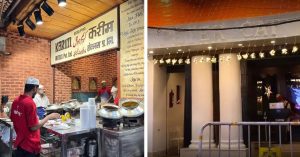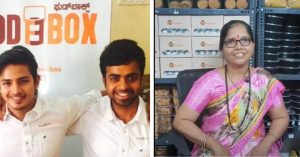TBI Food Secrets: If You Love Pani Puri, You Will Love the Interesting Story Behind its Origins Too!
While pani puri's flavour-packed, comfortingly familiar taste has a huge fan following across India, the fascinating story of its origin remains unknown to most Indians.

There is something comfortingly familiar about eating a humble pani puri – a crispy hollow ball made of semolina or wheat, filled with spicy potatoes and topped with tangy, spicy tamarind water made fragrant by mint leaves and black salt.
It may sound like culinary chaos, but that this spicy, crunchy wonder is absolutely delicious is something almost Indians will agree on.

Photo Source
Served by vendors from a setup that gives the word ‘utilitarian’ a run for its money, pani puri (also called golgappa, phuchka and a multitude of other monikers) is, in every sense, a material manifestation of the elusive emotion called “simple joy.” This innocuous street snack is also a great leveller – at a pani puri stall, you will see besuited businessmen step out of sleek cars to join the queue alongside the city’s poorest residents.
So how and where did this culinary gem really originate? Many believe that the answer lies in the history of the kingdom of Magadh.
One of the 16 Mahajanapadas (great kingdoms in Sanskrit) of ancient India, the Magadhan empire was situated on the banks of River Ganga in what is now west-central Bihar. Lively accounts of Magadh and its capital, Pataliputra, are available in the travel diaries of the Greek historian Megasthenes and the Chinese Buddhist pilgrims Faxian and Xuanzang.
It is believed that phulkis (the precursor to pani puri) first originated in Magadh at a time when several traditional specialities of the region, like chitba, pitthow, tilba and chewda of Katarni rice, were evolving. The culinary genius who invented them is lost in the pages of history, but if Indians had known who invented pani puri (or whatever you call this yummy snack), they would have thanked that person for generations!
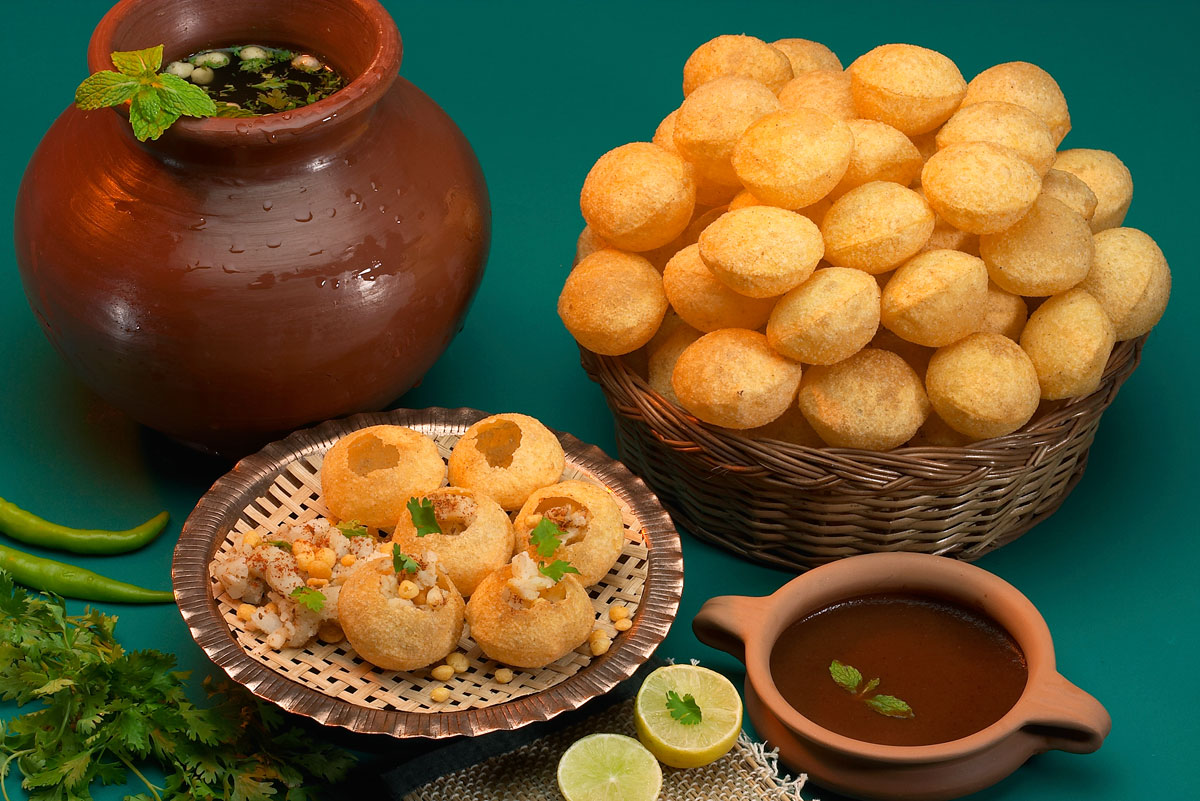
Photo Source
There is another legend associated with the origin of pani puris. This is how it goes:
In the epic Mahabharata, a newly-wedded Draupadi returns home to be given a task by her mother-in-law Kunti. The Pandavas were on exile and Kunti wanted to test if her new daughter-in-law would be able to manage with the scarce resources.
So she gave Draupadi some leftover potato sabzi and just enough wheat dough to make one puri, instructing her to make food that would satisfy the hunger of all five of her sons. It is believed that this was when the new bride invented pani puri. Impressed with her daughter-in-law’s ingenuity, Kunti blessed the dish with immortality.
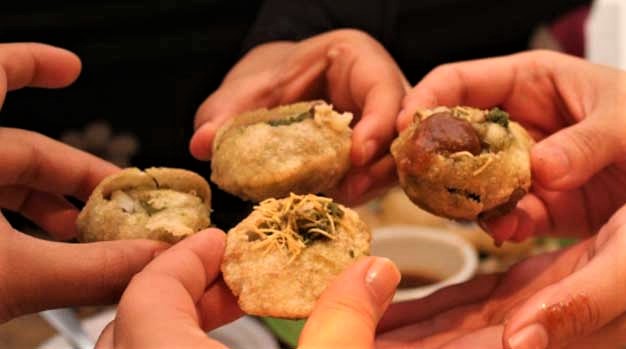
Photo Source
While the origins of this delicious snack is yet to be pinpointed with historical accuracy, the one thing that is clear is that pani puri travelled across India and made the country fall head over heels in love with it. Over the years, the combinations underwent many changes as each region developed its own version according to its preferences.
As a result, pani puri today has almost a dozen different names that changes from region to region. In most parts of central and southern India, it is called pani puri but the recipes have subtle variations. While in Maharashtra, hot ragda (white peas curry) is added to the potato mash, in Gujarat, it is boiled moong and in Karnataka, it is chopped onions.
Also Read: TBI Food Secrets: The Fascinating History Behind Rajasthan’s Traditional Dish Dal Baati Churma
In north India, pani puri is called gol gappe, gup chup, pani ke pataashe or phulkis. The signature element of this recipe is a spicy stuffing made out of a potato-chickpea mash and really tangy water, liberally infused with mint leaves. Interestingly, in Hoshangabad in Madhya Pradesh, pani puri is called tikki, which is usually used to denote crispy potato patties in north India!
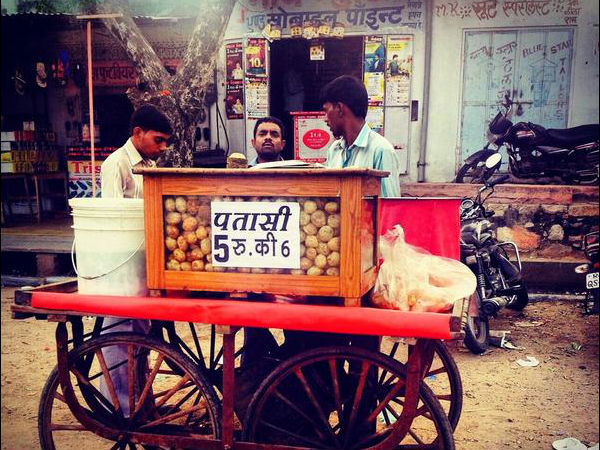
Photo Source
In West Bengal, pani puri is called phuchka, probably due to the ‘phuch’ sound it makes when you take a bite. The unique feature of the phuchka lies in the fact that it’s made of wholewheat, unlike the other that are usually made of flour or semolina. The phuchka water is also a little spicier and tangier than that used in the rest of the country.
Here are a few of our favourite pani puri joints from different parts of the country. If you know a place that serves the best panipuri you have ever had, let us know in the comments
Mumbai: Elco Market in Bandra
Delhi: Chote Lal Chaat Bhandar at Chawri Bazaar
Kolkata: Phuchka stall outside Victoria Memorial
Bangalore: Rakesh Kumar’s Pani Puri in Jayanagar
Chennai: Gangotree in Gopalapuram
Hyderabad: Maharaja Chaat in Jubilee Hills.
Lucknow: King of Chaat in Hazaratganj,
Ahmedabad: Shantaben Panipuriwala in Ellisbridge Corner
Nagpur: Gurukrupa Chaat Centre in Pratap Nagar
Patna: Pani puri stall in Maurya Lok complex
Pune: Jaishanker Panipuri wala in Babajan Chowk
Chandigarh: Ram Chaat Bhandaar in Sector 34
Guwahati: Ramdev Puchka stall in Kumarpara Panchali
Feature Photo Source
You May Like: TBI Food Secrets: Unravelling the Fascinating History of the Samosa, India’s Favourite Street Snack
Like this story? Or have something to share? Write to us: [email protected], or connect with us on Facebook and Twitter.
NEW: Click here to get positive news on WhatsApp!
This story made me
- 97
- 121
- 89
- 167
Tell Us More
We bring stories straight from the heart of India, to inspire millions and create a wave of impact. Our positive movement is growing bigger everyday, and we would love for you to join it.
Please contribute whatever you can, every little penny helps our team in bringing you more stories that support dreams and spread hope.






